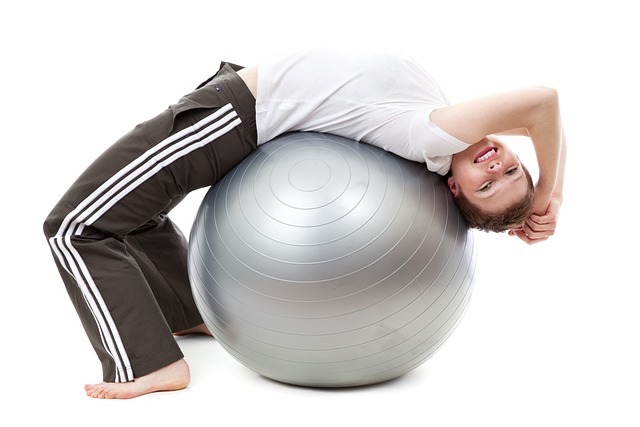 Today we celebrate the beginning of a new year. One of the classic traditions for the first day of the new year is to establish a set of goals for the upcoming year. Typically these include health goals — our so-called New Year’s resolutions. The idea is to start off the year on a positive note and then see how long we can keep up the good work. Gym memberships skyrocket and the gyms actually look busy. Usually, when I go to the gym there are only 4 or 5 other people in the gym — pretty quiet. January is the busiest month at health food stores as well. Resolving to be healthy in 2023 is a super common goal.
Today we celebrate the beginning of a new year. One of the classic traditions for the first day of the new year is to establish a set of goals for the upcoming year. Typically these include health goals — our so-called New Year’s resolutions. The idea is to start off the year on a positive note and then see how long we can keep up the good work. Gym memberships skyrocket and the gyms actually look busy. Usually, when I go to the gym there are only 4 or 5 other people in the gym — pretty quiet. January is the busiest month at health food stores as well. Resolving to be healthy in 2023 is a super common goal.
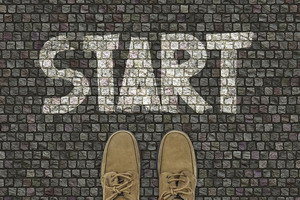 Now you might think that this article is about diets and food, but it’s not. The word MEAL is actually an acronym that stands for Minimum Exercise Activity Level — MEAL. What I want to discuss today is what the minimum is that you want to incorporate into your resolutions for 2023. I will also have some suggestions on how to achieve success with your resolutions rather than the typical scenario in which sometime in February you give up on your goals and settle into just living life trying to get by.
Now you might think that this article is about diets and food, but it’s not. The word MEAL is actually an acronym that stands for Minimum Exercise Activity Level — MEAL. What I want to discuss today is what the minimum is that you want to incorporate into your resolutions for 2023. I will also have some suggestions on how to achieve success with your resolutions rather than the typical scenario in which sometime in February you give up on your goals and settle into just living life trying to get by.
 So there has been tons and tons of research done on exercise. One of the more interesting aspects has been just how much exercise is needed by us humans. One thing we know for certain, humans were not designed to sit down for long periods of time, particularly in front of a computer. We are designed to be moving casually quite a bit during the day. Throughout human pre-history, there was no sitting. People squatted. hey did not sit. Other than a few pharaohs having thrones, sitting even on crude benches did not begin until about 500 BC. Before that, you squatted or lounged on available rocks or logs. But enough of the relaxing stuff, how much physical exertion did the average person need to stay healthy?
So there has been tons and tons of research done on exercise. One of the more interesting aspects has been just how much exercise is needed by us humans. One thing we know for certain, humans were not designed to sit down for long periods of time, particularly in front of a computer. We are designed to be moving casually quite a bit during the day. Throughout human pre-history, there was no sitting. People squatted. hey did not sit. Other than a few pharaohs having thrones, sitting even on crude benches did not begin until about 500 BC. Before that, you squatted or lounged on available rocks or logs. But enough of the relaxing stuff, how much physical exertion did the average person need to stay healthy?
 Pushing things back quite a ways humans were hunter-gatherers. So the typical exercise was wandering around gathering fruits, stealing eggs, digging up roots, and occasionally ganging up on some large beast with your buds to kill it for dinner. Actual strenuous exercise was infrequent. Modern research appears to bear this out. For instance, how much sprinting is necessary for good cardiovascular health? Your ability to sprint, either to catch dinner or avoid becoming something’s dinner, was not a daily need. Research shows us that a couple of 20 – 30 second sprints 2 or 3 times a week is all we need to convince our heart and vascular system to stay healthy. That is not very much! If you have not done a sprint in 30 years, it may seem like a lot. But compared to what professional athletes do, it is almost nothing.
Pushing things back quite a ways humans were hunter-gatherers. So the typical exercise was wandering around gathering fruits, stealing eggs, digging up roots, and occasionally ganging up on some large beast with your buds to kill it for dinner. Actual strenuous exercise was infrequent. Modern research appears to bear this out. For instance, how much sprinting is necessary for good cardiovascular health? Your ability to sprint, either to catch dinner or avoid becoming something’s dinner, was not a daily need. Research shows us that a couple of 20 – 30 second sprints 2 or 3 times a week is all we need to convince our heart and vascular system to stay healthy. That is not very much! If you have not done a sprint in 30 years, it may seem like a lot. But compared to what professional athletes do, it is almost nothing.
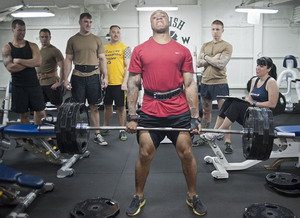 How about strength training? Again, very little is needed to build sufficient muscles to be healthy. We are not talking about looking like a professional bodybuilder. That look involves lots of things that are decidedly not healthy. For regular health purposes, moving heavy things around a bit a couple of times a week is all you need. How heavy you ask? You should be able to lift, push, or pull a weight slowly 4 to 8 times before your muscles give out. One round of muscle failure is all you need. No multiple sets of reps are required. Special note: muscle contraction does not build much muscle. It is the slow return of the weight to its starting position that builds the muscle the most.
How about strength training? Again, very little is needed to build sufficient muscles to be healthy. We are not talking about looking like a professional bodybuilder. That look involves lots of things that are decidedly not healthy. For regular health purposes, moving heavy things around a bit a couple of times a week is all you need. How heavy you ask? You should be able to lift, push, or pull a weight slowly 4 to 8 times before your muscles give out. One round of muscle failure is all you need. No multiple sets of reps are required. Special note: muscle contraction does not build much muscle. It is the slow return of the weight to its starting position that builds the muscle the most.
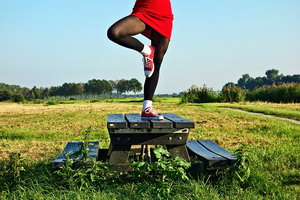 What about stability and balance? I have worked with many people on their balance. I tell them that just a couple minutes twice a day doing balance exercises will do wonders. The same is true for working stabilizer muscles in the back, such as with the Foundation Exercises.
What about stability and balance? I have worked with many people on their balance. I tell them that just a couple minutes twice a day doing balance exercises will do wonders. The same is true for working stabilizer muscles in the back, such as with the Foundation Exercises.
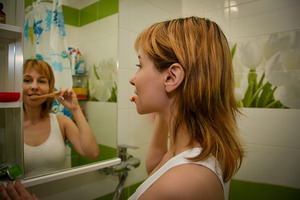 The picture I am building here is that your New Years’ resolution to join a gym and get in shape does not need to amount to all that much work. You don’t need to become a gym rat and spend a couple of hours in the gym every day. Only 30 to 40 minutes twice a week is plenty. But from my view, I would start at an even simpler level. Save the gym membership until February or March. Start with some tiny steps first. Wake your brain up to physical conditioning slowly. Connect it to things you already do regularly. For instance, while you are waiting for the hot water to happen in the shower, do a couple of push-ups against the wall or bathroom counter. That is all, just two! As you brush your teeth, flex your body a little more forward as though you were trying to see something caught in your teeth. Just hold that posture for 4 seconds one time. Now while you a ready to get dressed and put your pants on, do a squat as best you can as though you were going to get something in the bottom drawer of your chest of drawers. Just one squat is all. How about as you are ready to put on your underwear balance on one foot for a few seconds? If you want to get really advanced, try the other foot as well. Last of all, once you are all dressed and ready to go, spend 5 seconds running in place as fast as you can. That’s right, just 5 seconds and quit. This will get your blood moving and help wake you up for the day.
The picture I am building here is that your New Years’ resolution to join a gym and get in shape does not need to amount to all that much work. You don’t need to become a gym rat and spend a couple of hours in the gym every day. Only 30 to 40 minutes twice a week is plenty. But from my view, I would start at an even simpler level. Save the gym membership until February or March. Start with some tiny steps first. Wake your brain up to physical conditioning slowly. Connect it to things you already do regularly. For instance, while you are waiting for the hot water to happen in the shower, do a couple of push-ups against the wall or bathroom counter. That is all, just two! As you brush your teeth, flex your body a little more forward as though you were trying to see something caught in your teeth. Just hold that posture for 4 seconds one time. Now while you a ready to get dressed and put your pants on, do a squat as best you can as though you were going to get something in the bottom drawer of your chest of drawers. Just one squat is all. How about as you are ready to put on your underwear balance on one foot for a few seconds? If you want to get really advanced, try the other foot as well. Last of all, once you are all dressed and ready to go, spend 5 seconds running in place as fast as you can. That’s right, just 5 seconds and quit. This will get your blood moving and help wake you up for the day.
 That is it. That is all I recommend for your first month of physical training. All total, it should not add much if any time to your morning routine as everything is done during the normal flow of getting ready for the day. Give these tiny steps a try. Even though they seem easy, they will be building neural pathways for exercise activity in your daily life. You can look for other times of the day when you can slip in a tiny bit of exercise. The reason most New Year’s resolutions fail is because people take on way more than they have time for. In order to enjoy making more time for such activities, you have to enjoy the activities themselves. Tiny steps build enjoyment because it is a challenge figuring out tiny ways to sneak in a touch here and another touch there. It becomes a game, and we like winning such games. It motivates on another level as well. There is something nurturing and satisfying in taking care of ourselves without killing ourselves. These tiny bits of exercise feel emotionally good to do even though there is nothing that feels particularly great in doing a squat.
That is it. That is all I recommend for your first month of physical training. All total, it should not add much if any time to your morning routine as everything is done during the normal flow of getting ready for the day. Give these tiny steps a try. Even though they seem easy, they will be building neural pathways for exercise activity in your daily life. You can look for other times of the day when you can slip in a tiny bit of exercise. The reason most New Year’s resolutions fail is because people take on way more than they have time for. In order to enjoy making more time for such activities, you have to enjoy the activities themselves. Tiny steps build enjoyment because it is a challenge figuring out tiny ways to sneak in a touch here and another touch there. It becomes a game, and we like winning such games. It motivates on another level as well. There is something nurturing and satisfying in taking care of ourselves without killing ourselves. These tiny bits of exercise feel emotionally good to do even though there is nothing that feels particularly great in doing a squat.
 One of the self-smiles I noticed after doing these tiny bits of exercise was that the floor did not seem as far away as it used to be. Seriously, I had so little flexibility in my calves and hamstrings initially that picking something up off the floor was painful. Now it’s not. That seems silly, but not being able to reach stuff that dropped on the floor really bothered me. I would have to get down on my knees to get stuff I had dropped. Getting up from there was no joy either.
One of the self-smiles I noticed after doing these tiny bits of exercise was that the floor did not seem as far away as it used to be. Seriously, I had so little flexibility in my calves and hamstrings initially that picking something up off the floor was painful. Now it’s not. That seems silly, but not being able to reach stuff that dropped on the floor really bothered me. I would have to get down on my knees to get stuff I had dropped. Getting up from there was no joy either.
 So what is our MEAL plan? We want to do a push/pull, a bit of posture strengthening, a squat, a bit of balance, and a moment of revving up your engines. That is where we start. That may be all we want to do for a long time, and that is fine. But when you do feel like doing more, be aware that even with a full-on gym workout, you are not doing much more than this. Instead of a few seconds of activity, we slowly build up to a minute or two of different activities. Getting to and from the gym will probably take more time than the workout itself. In fact, you may want to start out with bodyweight exercises at home. Why go to a gym at all? Throw in a couple of resistance bands and you got it covered. I was doing all at-home exercise for the first couple of years of lockdown, but I have switched to the gym recently because I don’t really have any equipment at home for endurance training. I like using the elliptical for this purpose. So, I go to the gym twice a week for about 45 minutes. That is quite enough for me to feel the effects a couple of days later.
So what is our MEAL plan? We want to do a push/pull, a bit of posture strengthening, a squat, a bit of balance, and a moment of revving up your engines. That is where we start. That may be all we want to do for a long time, and that is fine. But when you do feel like doing more, be aware that even with a full-on gym workout, you are not doing much more than this. Instead of a few seconds of activity, we slowly build up to a minute or two of different activities. Getting to and from the gym will probably take more time than the workout itself. In fact, you may want to start out with bodyweight exercises at home. Why go to a gym at all? Throw in a couple of resistance bands and you got it covered. I was doing all at-home exercise for the first couple of years of lockdown, but I have switched to the gym recently because I don’t really have any equipment at home for endurance training. I like using the elliptical for this purpose. So, I go to the gym twice a week for about 45 minutes. That is quite enough for me to feel the effects a couple of days later.
 Do I have any other New Years’ resolution suggestions? Just one food one — cut out vegetable oils/ seed oils from your diet. Stick with olive, avocado, coconut, butter, and lard. Have a great New Year!
Do I have any other New Years’ resolution suggestions? Just one food one — cut out vegetable oils/ seed oils from your diet. Stick with olive, avocado, coconut, butter, and lard. Have a great New Year!
Take care,
David
